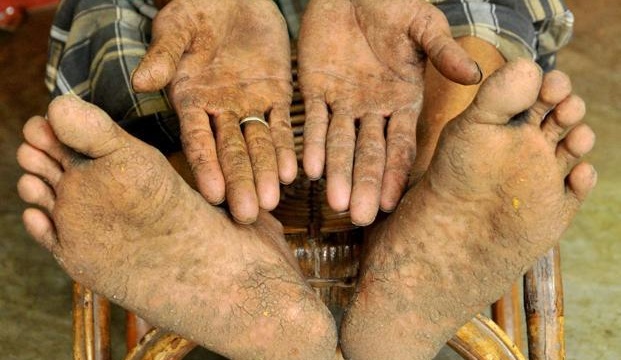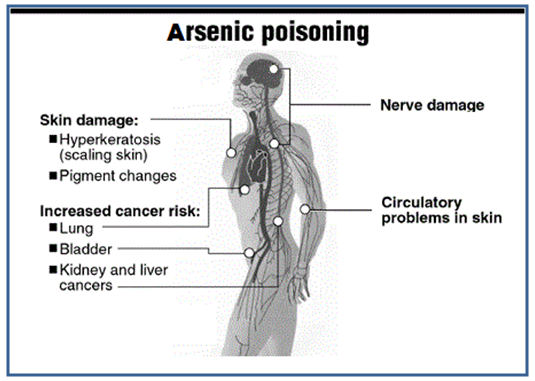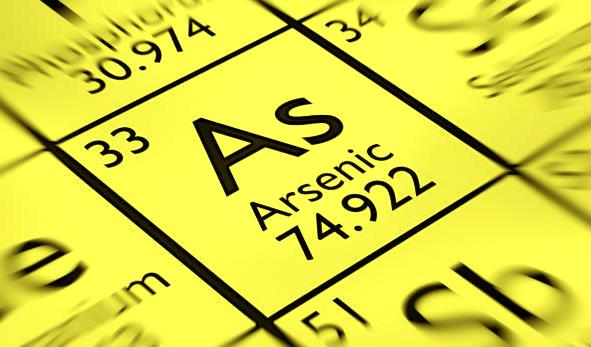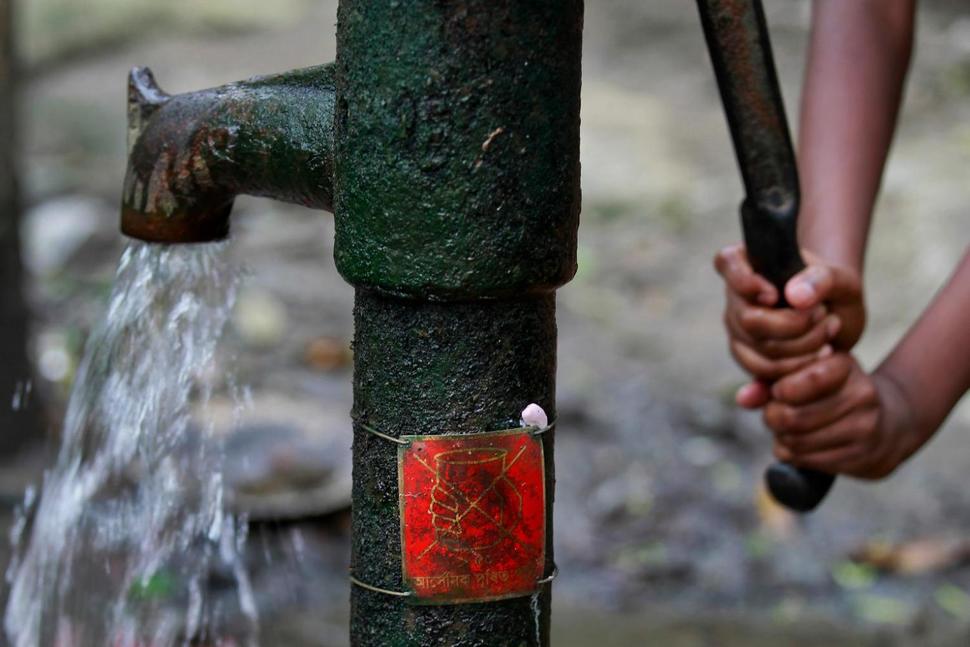Clean and portable water is a basic human need but what happens when due to infrastructural lapses and lack of governmental will even this basic right is denied to a large section of the population? Diseases such as Cancer become rampant and the general health of the public deteriorates radically. The piece that follows throws light on this grave matter.

Dr. Ruchi Shree is Assistant Professor, Department of Political Science, Janki Devi Memorial College, University of Delhi.
In the 21stcentury when the scientific and technological advancement has reached at its zenith, we are also facing a plethora of problems which were earlier never heard of. Among the numerous new challenges, let me name few of them. There are cases of depression due to excessive use of social media, massive increase in number of couples opting for in vitro fertility (IVF) over natural procreation, the rise in number of patients with cancer of different kinds etc. These changes not only depict the changing social trends but also the new burdens on the civilization. This paper intends to go deeper into one of the new age challenges, namely the arsenic poisoning of water leading to cancer in North India, especially in Bihar and West Bengal.
Arsenic (As), a tasteless and odorless substance is a metalloid widely distributed in the earth’s crust. As an element it occurs in organic as well as inorganic compounds. According to the reports published by International Agency for Research on Cancer (IARC), the presence of arsenic in inorganic compounds is highly toxic and also carcinogenic. The consumption of groundwater with arsenic for long time has been linked to different forms of cancer, the most common among them are skin cancer, cancers of kidney, bladder, etc. In 1983, the first case of arsenic poisoning[i] was reported in Kolkata, West Bengal. A patient had developed skin lesions, reported by Dr. Kunal Kanti Majumdar who is a professor at the KPC Medical College and Hospital in Kolkata.

The arsenic contamination of groundwater is not unique to India[ii] but also reported in the other countries of the world viz. Chile, Mexico, the U.S., Argentina, China and Bangladesh. Within India, the area around the Ganges delta in the eastern and northeastern India have high concentration of arsenic. As a result, the states most affected are West Bengal, Bihar, Assam, Jharkhand, U.P., Manipur and Chhattisgarh. In the past two decades, the cases of cancer have gone up manifold. The people consuming water with high concentration of arsenic initially develop hard patches called hyperkeratosis on their palm and sole. The consumption also leads to heart disease, impaired lung function and kidney failure.
As far as the permissible limit of arsenic in water is concerned, it is 10 parts per billion (ppb) in drinking water set up by the United States. In India, above 50 ppb is considered harmful. Many field studies done in Bihar suggest that the arsenic concentration are much higher – to the extent of 3,880 ppb. The institutes viz. Mahavir Cancer Sansthan (MCS) and A. N. College in Patna (Bihar) have conducted research throughout the state to understand the extent of the problem. MCS also known as Mahavir Cancer Institute and Research Centre has been studying the groundwater pollution for more than a decade. According to reports, out of 38 districts of Bihar, groundwater with arsenic concentration above the permissible limit is there in 17 districts. Some of the worst affected districts are Buxar, Vaishali, Bhagalpur, Bhojpur, etc.

In 2016, as many as 23,000 new cases of cancer were reported at the MCS. It is remarkable that after the Tata Memorial Hospital in Mumbai, worldwide known for one of the best cancer treatment facilities, it is the MCS reporting the second highest number of cancer. Dr. Ashok Ghosh, a professor at MCS has played an instrumental role in conducting and documenting the research on arsenic related cases of cancer since 2004. “I saw 6 and 7-year-old children coming with cancer. These children don’t chew tobacco or smoke. It was very disturbing, and I could not sleep. Slowly, I adjusted” said Dr. Ghosh to the reporters from CNN. So far, he has tested 44,000 tubewells in Bihar and found the water of more than 30 percent of them have arsenic concentration higher than 10 ppb.
Overall, the situation is very grim and there is a need to analyze by going deep into the reasons of increasing concentration of arsenic in groundwater. Till 1970 in most of the parts of India, people used to drink surface water available in rivers, wells, ponds, etc. But, gradually this water started being considered unfit for drinking and millions of tubewells were installed all over the country to use the groundwater. There is a wide gap between the rate of extraction of groundwater and its recharge. As a result, the arsenic gets further concentrated. The rapid rate of population explosion, urbanization and dumping of industrial effluents are the major reasons behind it.
As mentioned in the beginning, our civilization is witnessing many negative consequences of modernity. Its twin premises of rationality and scientific advancement have certain limitations. The new age information technology cannot solve all the problems that we are facing today. Many social problems do not even get adequate attention of the state. In fact, the modern state as an actor has not been able to fulfill most of the expectations of the common people. For instance, in terms of planning the expenditure, one can easily notice its bias towards arms and trade over health and well-being of the people. The rise in cases of arsenic poisoning is also a time to reflect upon the link between various factors which apparently do not seem to be co-related as such.
The rapid decline in the level and the quality of groundwater is a common feature throughout the country. The drive for concretization has led to lesser replenishment of the groundwater. The rivers are changing their course and every year many states are facing floods. Bihar faces flood almost every alternate year including the present year. The human settlements also change according to the changing geographical situation. The floods come with ‘politics of aid’ and the state does not seem to have a long term planning to handle the crisis. Coming back to the problem of arsenic in water, the response of the respective governments of the states like West Bengal and Bihar is not so satisfactory. They seem to overlook the scale of the problem.
In Bihar, few remedial actions have been taken in last few years. In 2011, in a village named Shahpur (near Bhagalpur), a company from Gurgaon installed an arsenic filtration unit. After four years, the contract was given to another company and later to a third company. The residents of the village complain that the filters are hardly changed by these private companies and the water in that area is yellow and lacking any option, people are forced to drink the polluted water. Even the filtration unit set by the state govt. are no better. Nupur Bose, a professor at A N College, Patna found the processed water by the filtration units contain higher arsenic levels than the raw water. She says that the filter is itself leaching arsenic.
There is a wide discrepancy between the govt. data and the data provided by the researchers. For example, according to the govt. data only four blocks in Bhagalpur have high arsenic levels but the research conducted by Ranjit Kumar (a member of the team of researchers led by Dr. Ghosh of MCS) suggests high level of arsenic in thirteen out of sixteen blocks. The Public Health Engineering Department (PHED), which is responsible for providing clean drinking water has centralized the awarding of tender for the filtration plants. The tenders are given at two levels- first, the installation and running of the units and second, for operations and maintenance.
In present times as well as in future, lack of clean drinking water is a major challenge. Water is and has always been a life giving substance but the ‘politics of water’ and ‘politics on water’ are changing very fast. In India, water as a natural resource[iii] has undergone major transformation in the neo-liberal era. Market as an actor is playing a dominant role and the shortage of water is fast paving way for its privatization. It is not possible to get into the details of debate on privatization in this writing. To sum up, the arsenic poisoning of water is also a reminder that we cannot manufacture water and whatever water is available is also not clean for drinking. It is the time to rethink about the paradigm of development and the consequences of industrialization. We also need to look for the ways to ensure the equitable distribution of clean water in the society.
REFERENCES:
-
Numerous writings on arsenic poisoning mention about this case. The cancer cases started rising in the last two decades.
-
According to the International Agency for Research on Cancer (IARC), the specialized cancer research institute of the World Health Organization (WHO), the role of environmental factors and lifestyle disorders are very significant reasons behind cancer worldwide.
-
The perception of water as a natural resource and the politics around it is shaped by various positions ranging from water as an economic good to water as a human right to water as commons. The use of term water as ‘commons’ denotes the worldview that it belongs to everyone and thus beyond ownership.
References:
-
Medhavi Arora (2017), ‘Arsenic-polluted water linked to cancer in India’, available at http://edition.cnn.com/2017/04/28/health/arsenic-water-pollution-cancer-india/index.html,
-
‘Cancer has exploded in Bihar as lakhs of people drink water poisoned with arsenic’, available at https://scroll.in/pulse/835431/ignored-arsenic-contamination-in-bihars-water-has-led-to-an-explosion-of-cancer
The New Leam has no external source of funding. For retaining its uniqueness, its high quality, its distinctive philosophy we wish to reduce the degree of dependence on corporate funding. We believe that if individuals like you come forward and SUPPORT THIS ENDEAVOR can make the magazine self-reliant in a very innovative way.












